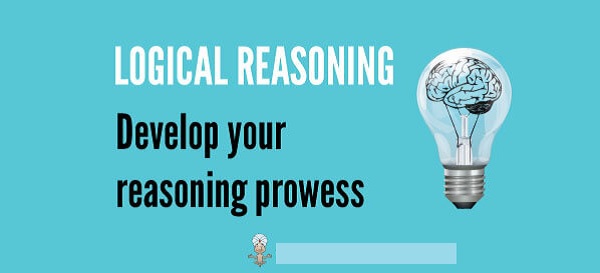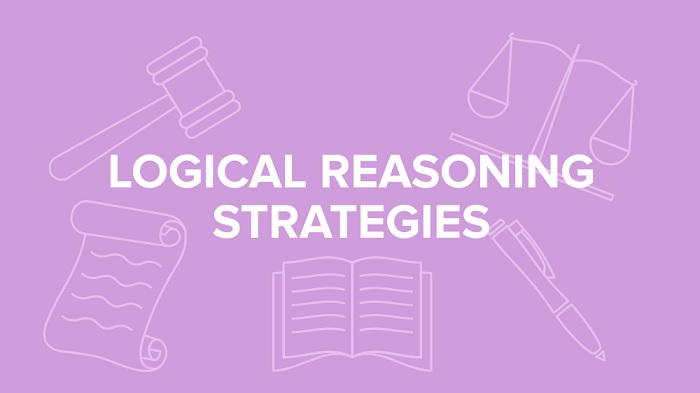Table of Contents
- Master the Art of Analyzing Arguments in LSAT Logical Reasoning
- Focus on Strengthening Your Critical Thinking Skills for LSAT Logical Reasoning
- Understand the Strategies for Effective Reading Comprehension in LSAT Logical Reasoning
- Learn How to Leverage Diagramming Techniques in LSAT Logical Reasoning
The LSAT Logical Reasoning section is one of the most difficult sections of the LSAT. It requires a great deal of practice and commitment to master the logic and reasoning skills that are tested in this section. Fortunately, there are strategies and tips that can help you do well in this section of the LSAT. In this article, we will discuss the various strategies and tips you can use to prepare for the LSAT Logical Reasoning section and ace it.
Identify the Logical Fallacies and How to Avoid Them in LSAT Logical Reasoning
Logical fallacies are errors in reasoning that can lead to false conclusions. They are commonly seen in LSAT Logical Reasoning questions, and it is important to be able to identify them and avoid them in order to successfully answer the questions.
1. Appeal to Authority: This fallacy occurs when someone relies on an authority figure to make a claim without providing any evidence to back up the claim. To avoid this fallacy, evaluate the evidence and make your own conclusion instead of simply relying on an authority figure.
2. False Dilemma: This fallacy occurs when a situation is presented as having only two possible outcomes, when in reality there may be more options. To avoid this fallacy, look for alternative solutions or explanations.
3. Hasty Generalization: This fallacy occurs when someone draws a conclusion from a small sample size without considering all of the evidence. To avoid this fallacy, consider all of the evidence before drawing a conclusion.
4. Post Hoc Ergo Propter Hoc: This fallacy occurs when someone assumes that because one event followed another, the first event caused the second event. To avoid this fallacy, look for evidence of causation or correlation between the two events.
5. Slippery Slope: This fallacy occurs when someone assumes that if one event occurs, it will lead to a series of other events and eventually to an undesirable outcome. To avoid this fallacy, look for evidence that the sequence of events is likely to occur. By knowing what logical fallacies are and how to avoid them, you can be better prepared to answer LSAT Logical Reasoning questions and make sure you draw the most accurate conclusions.
Master the Art of Analyzing Arguments in LSAT Logical Reasoning
Analyzing arguments in LSAT Logical Reasoning is an essential skill to master if you want to do well on the exam. In this article, we will discuss the basics of argument analysis, so that you can become a more competent and confident test-taker. When you are presented with an argument in LSAT Logical Reasoning, your task is to identify the argument’s structure and determine whether or not it is logically valid. To do this, you must first understand what an argument is. An argument is an attempt to persuade someone of a particular conclusion through the use of evidence and reasoning. The structure of an argument consists of premises and a conclusion.
The premises are the evidence the author uses to support their conclusion, while the conclusion is the main point the author is trying to make. To determine the validity of an argument, you must examine both the premises and the conclusion. The first step in analyzing an argument is to identify the premises and conclusion. To do this, you must read the argument carefully and look for words and phrases that indicate the author’s point of view. For example, if the author says, “Therefore, I conclude that…” you can be sure that the sentence that follows is the conclusion.
Once you have identified the premises and conclusion, you should consider the strength of the argument. A strong argument has premises that logically lead to the conclusion. This means that the premises must be true and the conclusion must follow logically from them. You should also look for any missing pieces or logical flaws in the argument. Finally, you should consider any counterarguments that could be made against the author’s argument.
Counterarguments are reasonable arguments that contradict the author’s conclusion. If you can find reasonable counterarguments, you should discount the author’s argument as being weak or invalid. By understanding the basics of argument analysis, you can become a more competent and confident test-taker on the LSAT Logical Reasoning section. With practice, you can learn to identify premises and conclusions, assess an argument’s strength, and recognize counterarguments.
Focus on Strengthening Your Critical Thinking Skills for LSAT Logical Reasoning
Critical thinking skills are essential for success on the LSAT Logical Reasoning section. This section requires students to read and comprehend complex arguments and make deductions based on the evidence presented. Developing strong critical thinking skills is the key to success on this section. The first step to strengthening critical thinking skills is to practice answering Logical Reasoning questions. It is important to become familiar with the structure of the questions and the types of arguments that are presented. Answering practice questions allows students to become comfortable with the format of the section and the types of conclusions that need to be drawn.
In addition to practice questions, it is beneficial to read material that requires analysis and critical thinking. Reading books, articles, and opinion pieces can help students become familiar with the types of arguments that are presented on the LSAT Logical Reasoning section. When reading, it is important to take the time to form an opinion on the material and consider how it might be applied to real-life situations. Finally, it is important to develop the ability to think critically about one’s own thoughts and beliefs. It is essential to be able to evaluate both the strengths and weaknesses of one’s own opinions and to recognize when one’s opinions might be misguided.
Practicing this type of introspection and self-reflection can help students develop a deeper understanding of the arguments presented on the LSAT Logical Reasoning section. By consistently challenging oneself with practice questions, reading material that requires critical thinking, and developing the ability to evaluate one’s own opinions, students can strengthen their critical thinking skills and prepare for success on the LSAT Logical Reasoning section.

Understand the Strategies for Effective Reading Comprehension in LSAT Logical Reasoning
Effective reading comprehension is essential for success on the LSAT Logical Reasoning section. Here are some strategies to help maximize your performance:
1. Read the passage carefully and take notes. Make sure to pay attention to the main point of the passage, as well as any supporting details and arguments. Highlight keywords, phrases, and conclusions.
2. Read the questions carefully and note the keywords, phrases, and ideas. Make sure you understand what the question is asking and look for clues in the passage that will help you answer it correctly.
3. Read the answers carefully and eliminate any choices that are obviously wrong. Then look for the choice that best fits the facts and ideas in the passage.
4. Use the process of elimination. You may not be able to find the correct answer right away. But you can eliminate any choices that are clearly wrong. This will help you narrow down your choices and increase your chances of getting the correct answer.
5. Use the rules of logic. The LSAT Logical Reasoning section tests your ability to recognize logical arguments and patterns. Pay attention to the structure of the passage and look for any logical flaws or contradictions that could affect the answer. By following these strategies, you can increase your chances of success on the LSAT Logical Reasoning section. Good luck!
Learn How to Leverage Diagramming Techniques in LSAT Logical Reasoning
Diagramming techniques can be a powerful tool to help you understand and solve LSAT Logical Reasoning questions. When used correctly, diagrams can help you to quickly identify the structure of an argument. Identify missing pieces of information, and to solve difficult questions. To begin, you should familiarize yourself with the different types of diagrams used in LSAT Logical Reasoning. The most commonly used diagrams include Venn diagrams, circles, arrows, and boxes. Each of these diagrams can be used to represent different types of relationships between elements. Once you have familiarized yourself with the different types of diagrams, you can start applying them to LSAT questions.
When using diagrams, it is important to pay attention to the structure of the argument and identify any missing pieces of information. Diagrams can be used to represent the relationships between different elements and to identify the missing pieces of information needed to solve the question. In addition, diagrams can also help you to identify any logical flaws in the argument. Diagrams can help you to quickly and easily identify any logical fallacies in the argument and can help you to spot any inconsistencies or contradictions.
Finally, diagrams can provide you with an easy visual representation of the argument. This can be especially useful for more complex questions. As it can help you to understand the overall structure of the argument. By utilizing diagrams, you can quickly and easily identify the structure of an argument. Identify any missing pieces of information, identify any logical flaws, and gain a better understanding of the overall argument. Diagramming techniques can be a powerful tool to help you improve your performance in LSAT Logical Reasoning questions.
Conclusion
In conclusion, doing well on the LSAT logical reasoning section requires a combination of knowledge and strategy. You must have a thorough understanding of the fundamentals of logic and critical reasoning. As well as an awareness of the common types of questions and how to approach them. This will give you the foundation you need to score well on the LSAT logical reasoning section. Additionally, it’s important to practice and hone your test-taking skills. So you are familiar with the format and comfortable with the types of questions you’ll be asked. With the right amount of preparation and practice, you can improve your performance on the LSAT logical reasoning section and achieve your desired score.
